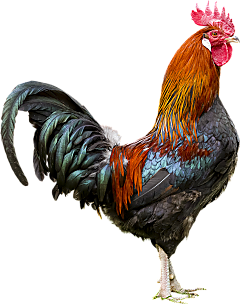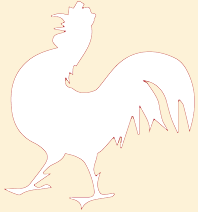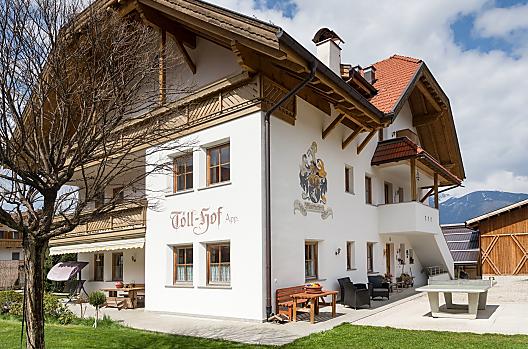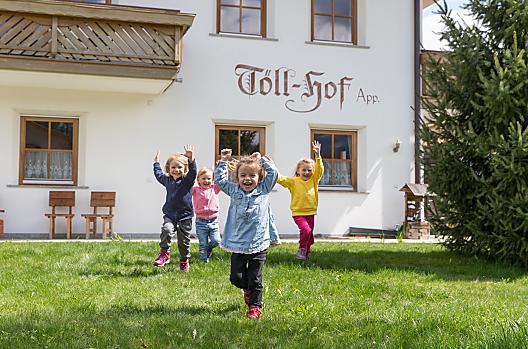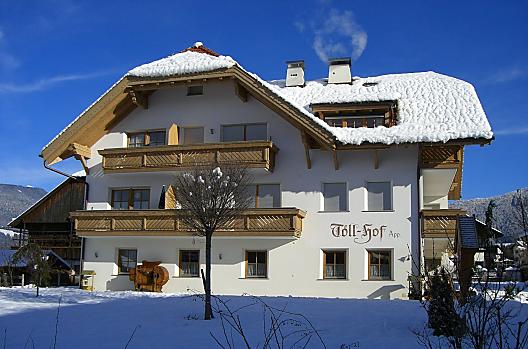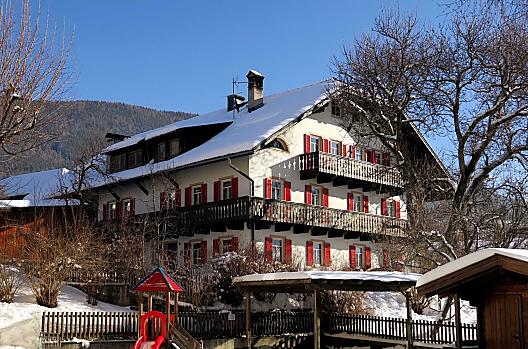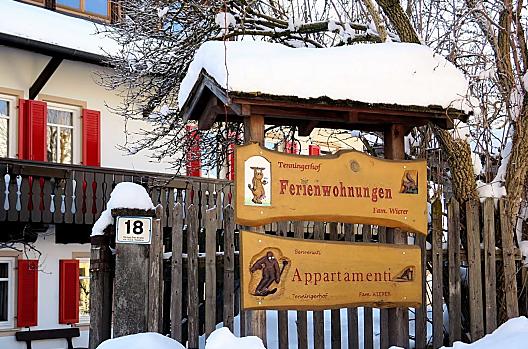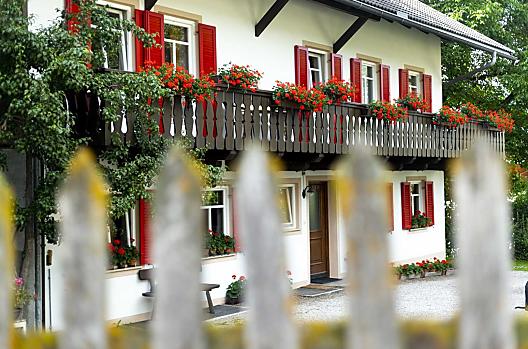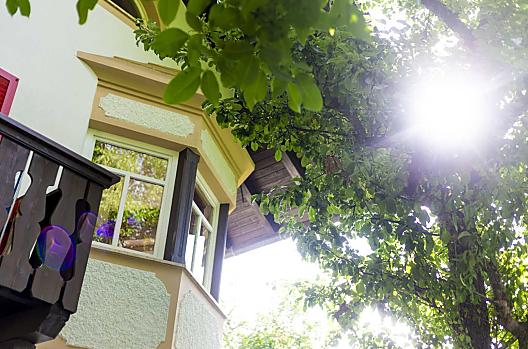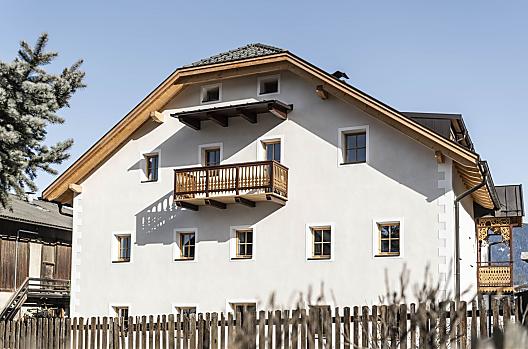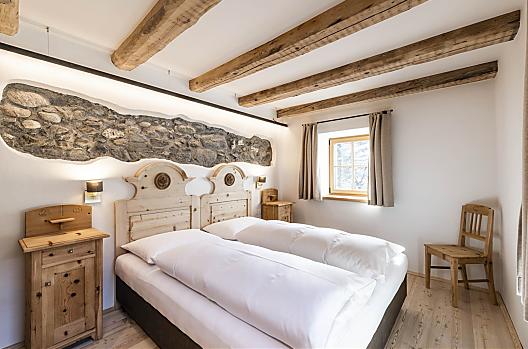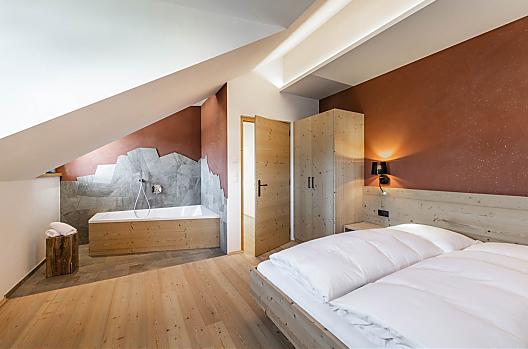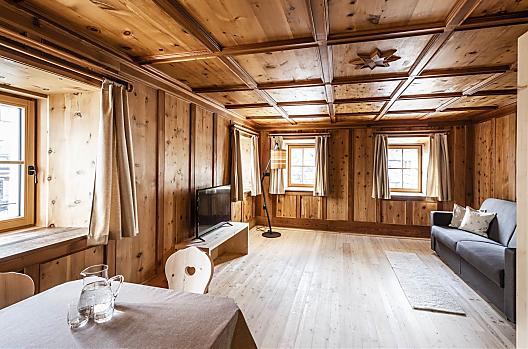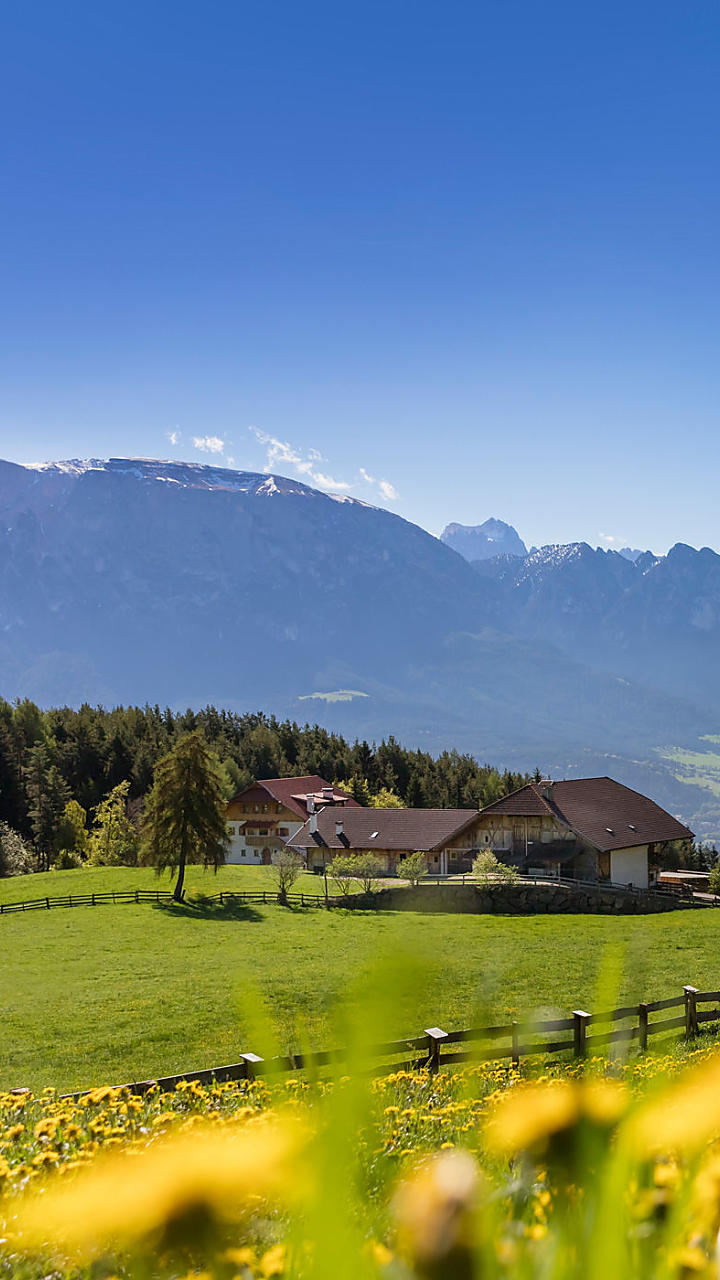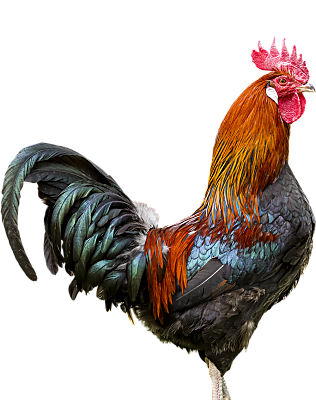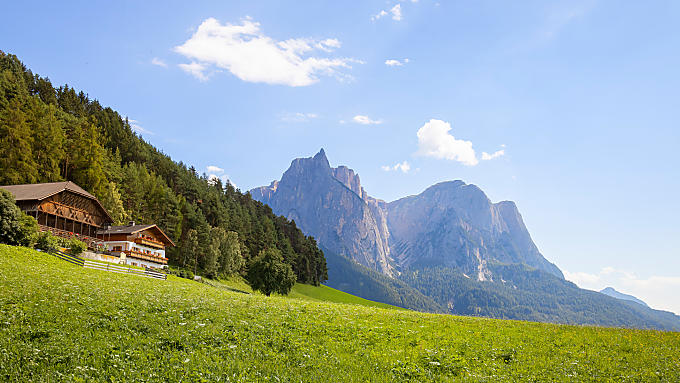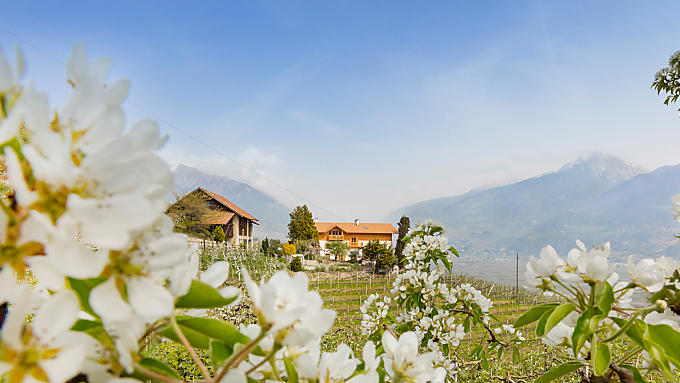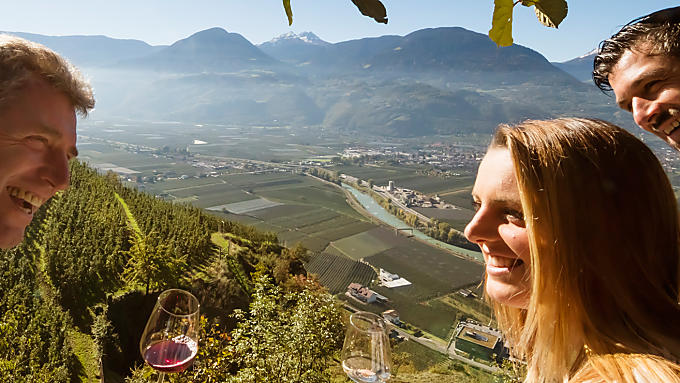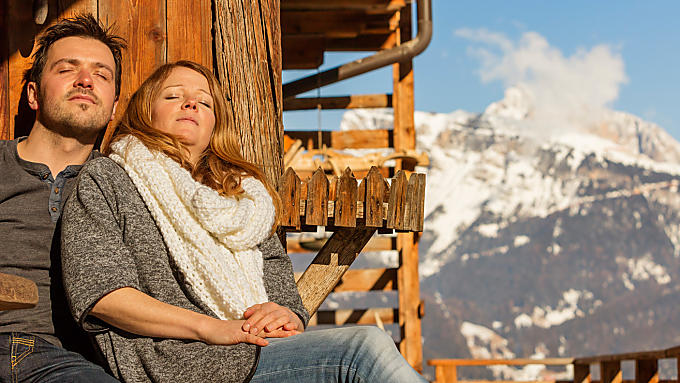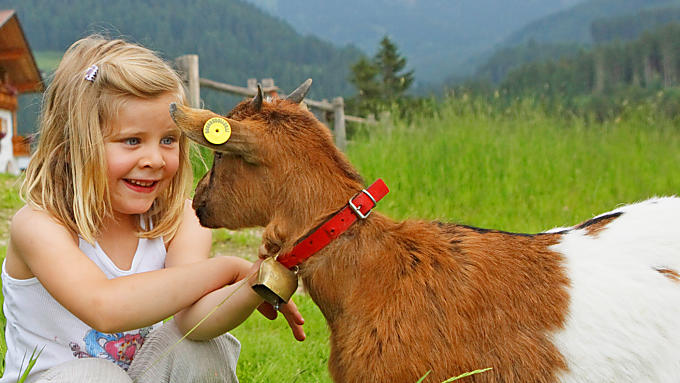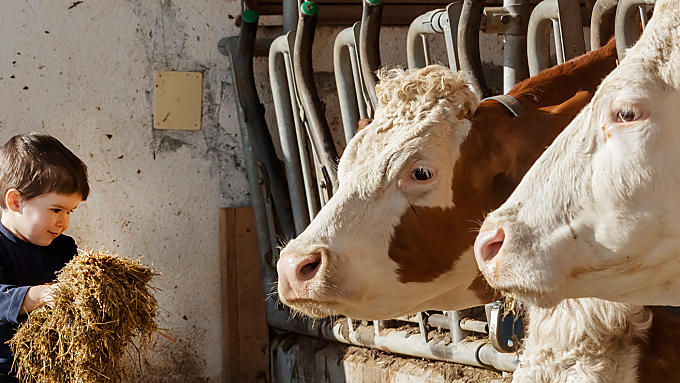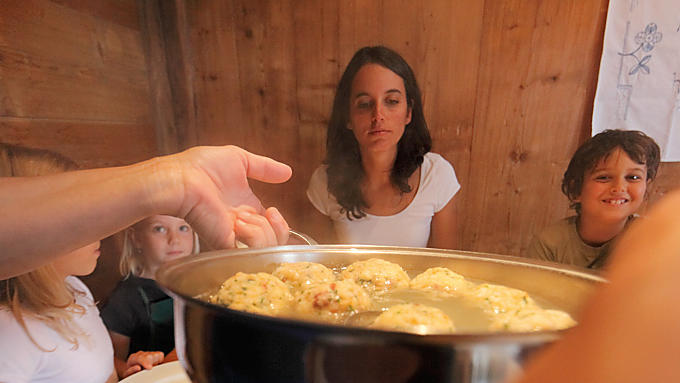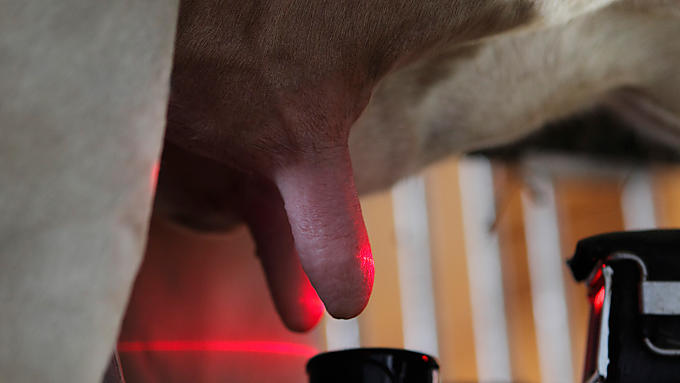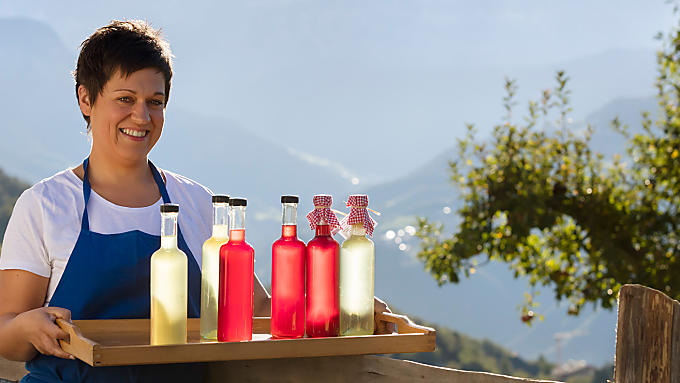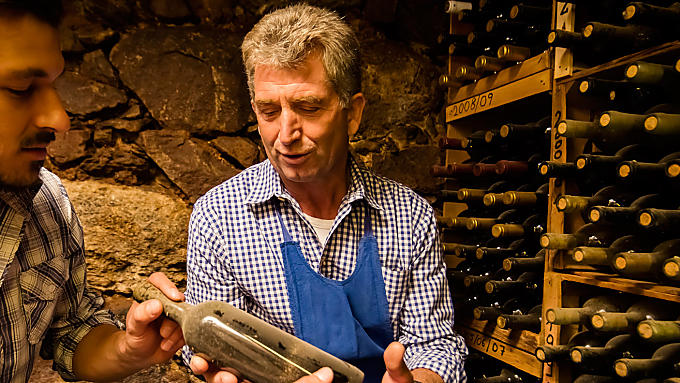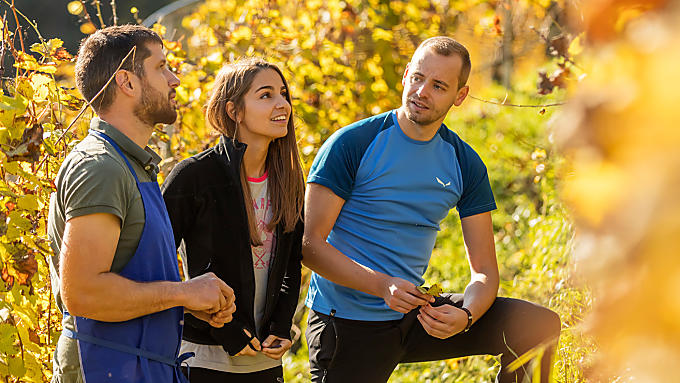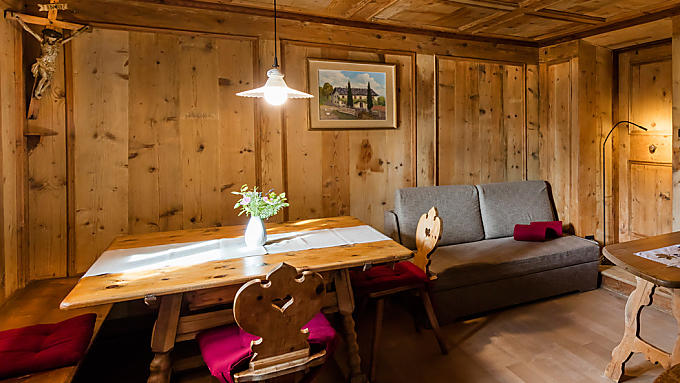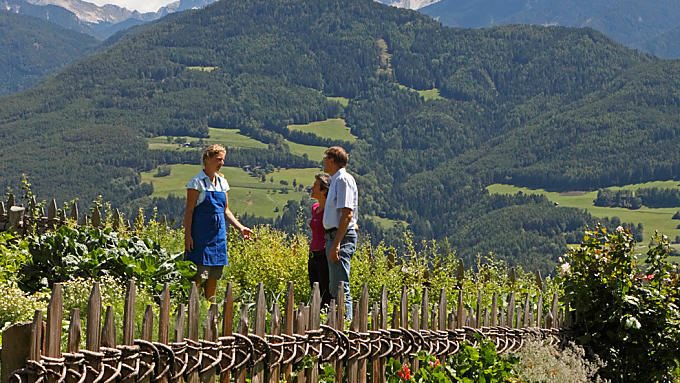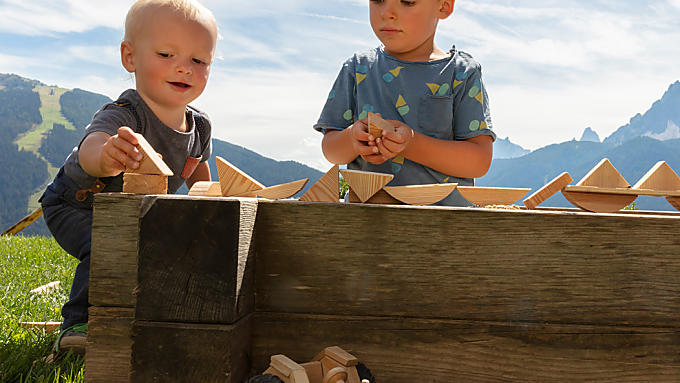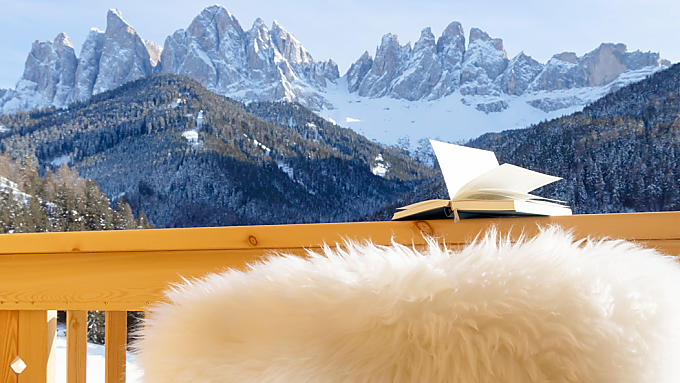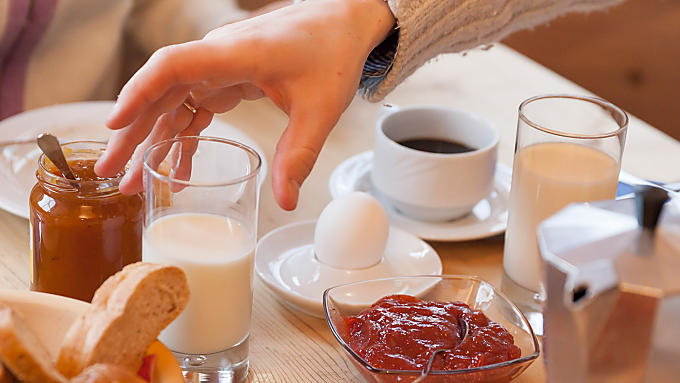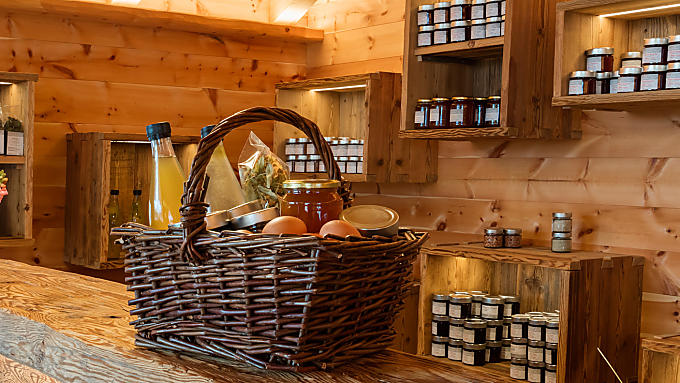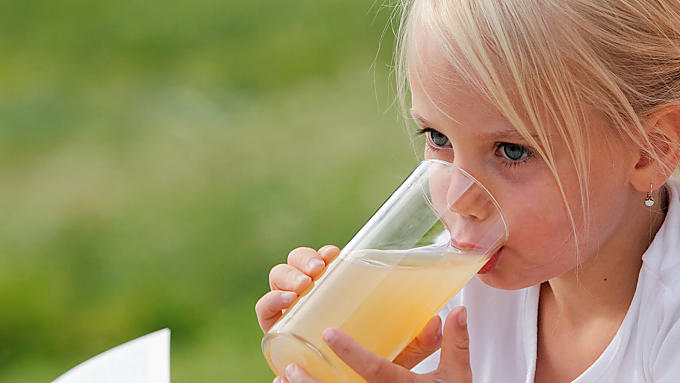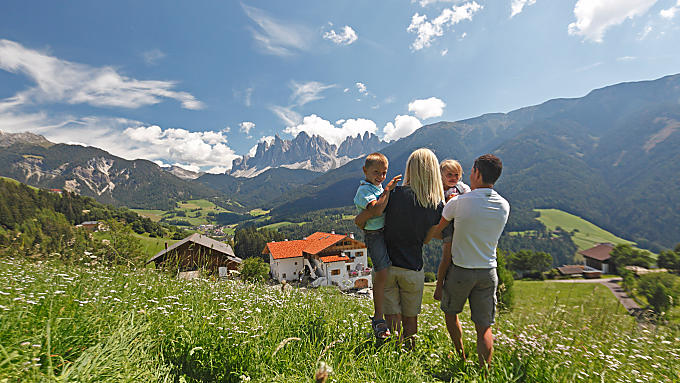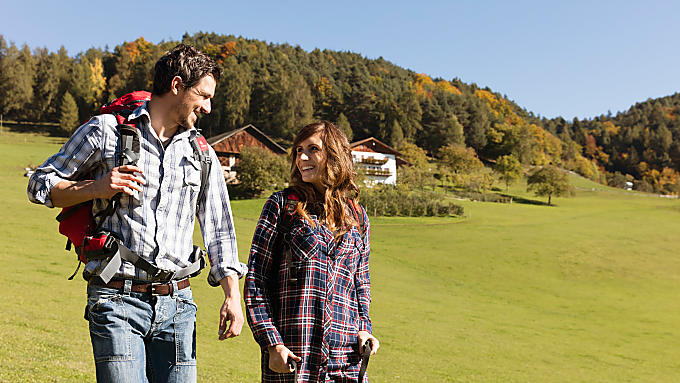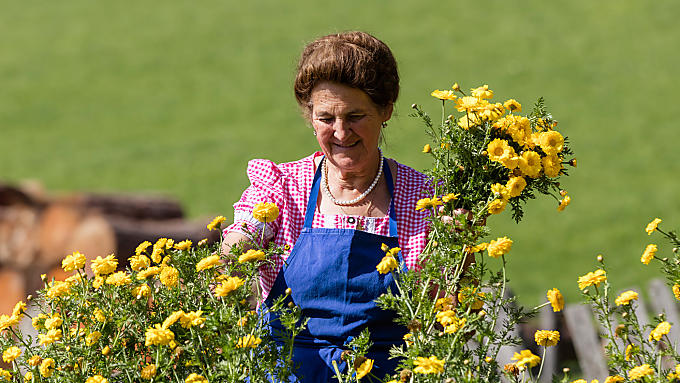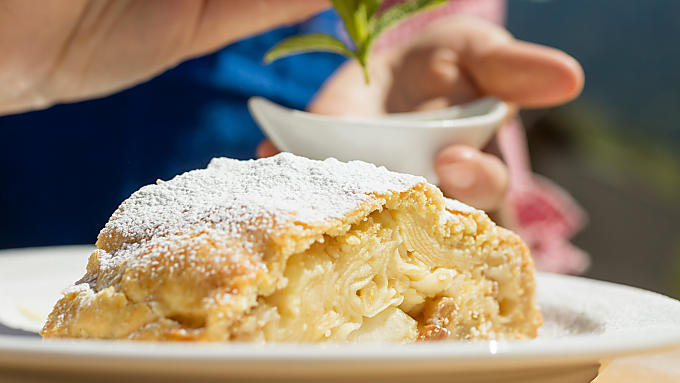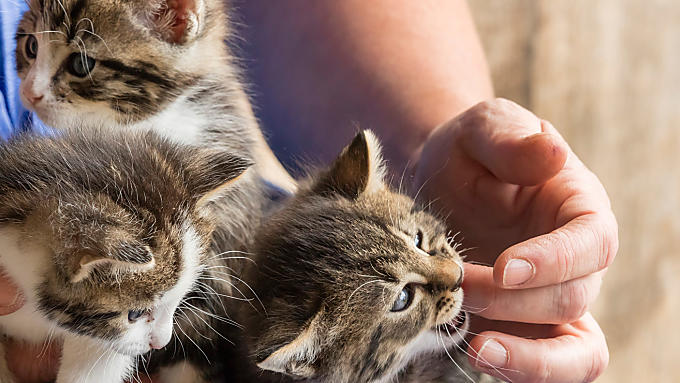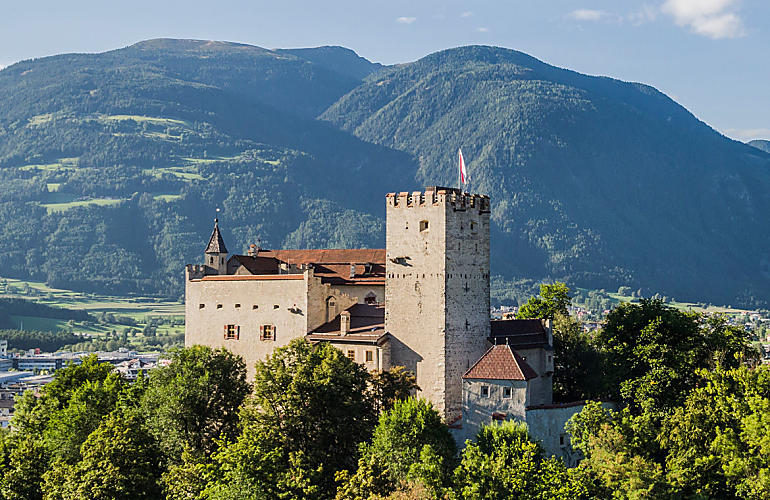
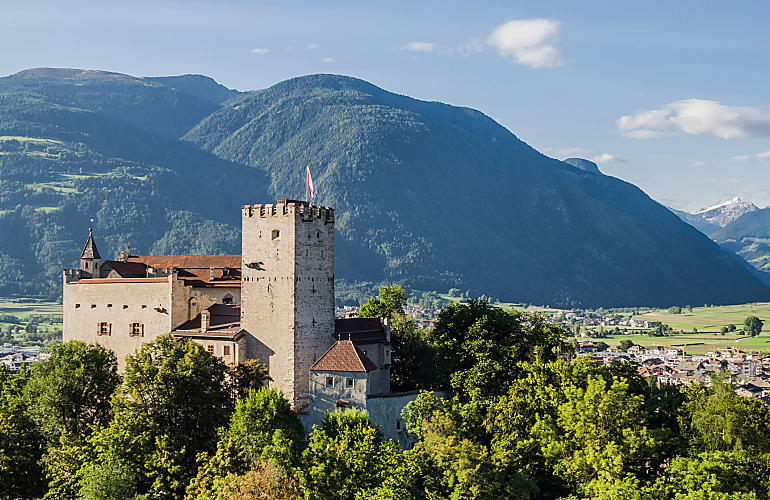
At the heart of the Pustertal
Holiday location
Farm Holidays in Bruneck
On a Farm Holiday in Bruneck, the Pustertal with its side valleys will be within reach. Sport and culture, customs and modern life meet in the centre of the Pustertal valley and make Bruneck the ideal holiday destination.
Bruneck lies at an altitude of 838 metres above sea level and represents the centre of the Pustertal. With its villages of Aufhofen, Dietenheim, Luns, St. Georgen, Stegen and Reischach, the municipality stretches over the whole of the Bruneck valley basin. The municipality of Bruneck is the economic and culture centre of the Pustertal.
On a Farm Holiday in Bruneck, the Pustertal with its side valleys will be within reach. Sport and culture, customs and modern life meet in the centre of the Pustertal valley and make Bruneck the ideal holiday destination.
Bruneck lies at an altitude of 838 metres above sea level and represents the centre of the Pustertal. With its villages of Aufhofen, Dietenheim, Luns, St. Georgen, Stegen and Reischach, the municipality stretches over the whole of the Bruneck valley basin. The municipality of Bruneck is the economic and culture centre of the Pustertal.
The town itself features a pretty old town, with shops and good restaurants where fine Pustertal cuisine is dished up. The villages of the parish of Bruneck are quieter and uphold traditions – each in their own way. Mainly farmers live here running cattle and dairy farms, just as they have done for a number of years.
In the beginning was the castle
Schloss Bruneck castle rises up on a hill above the town. In the 13th century, the administrative seat of the Bishop of Brixen, Bruno von Kirchberg, used to be in the village of Aufhofen, which was completely unprotected. Most of the villages have existed for quite a lot longer, since the 9th century in fact. Therefore Bishop Bruno had a fortress built in order to protect his territory in Pustertal. This is how the foundation stone for the town of Bruneck was laid. The first houses were built at the foot of the hill where the castle stood. Bruneck only consisted of two rows of houses at the time which formed a narrow alleyway. It was not until later that the town was extended around the town wall, parts of which may still be seen today, and the moat. The castle became a residential one during this period, giving it its current appearance. Today, it houses the Messner Mountain Museum Ripa, which is well worth a visit from your holiday flat or room.
The hill on which the castle is built is sacred to Bruneck locals and almost has a magical atmosphere. The mighty castle takes you back in time and you can escape the busy town centre and enjoy the peace and quiet there in a few steps. And once you take the time to look out over the town and the valley basin, you'll never want to leave.
Folklore
The South Tyrolean Folklore Museum is in Dietenheim. You can find out about rural traditions, houses and farms all over South Tyrol. On the four-hectare-large open-air site, there are reconstructions of farmhouses from the period between the 15th to the 19th centuries, with churches, farm parlours, bedchambers, stables, mills, workshops, gardens and fields. Cows, goats, sheep and cats wander over the site of the museum like on a real farm, geese chatter on the pond and duck waddle around. You can also watch bread being made or sheep being shorn.
With pride and local costume
As with all other villages in Pustertal, the places in the municipality of Bruneck each have their own fete where, without fail, everyone meets up, including some who live and work elsewhere. It's always a fun occasion that can get a bit loud, as the whole 'Musikkapelle' traditional band marches around and treats listeners to its full repertoire. There are lots of examples of fine, old local costume on display, too. Into the 18th century, there were dress codes in South Tyrol indicating wearers' status in society. Local costume goes back to this time, with rural costume developing later to allow identification of individual villages and valleys from its colours and patterns. At large church festivals and other occasions, people get their 'Puschtra Tracht' out of the closet in the town of Bruneck, too. When real Pustertal natives, or 'Puschtra', come together, 'Sunntagiwond', or 'Sunday best' may always be worn.
The town itself features a pretty old town, with shops and good restaurants where fine Pustertal cuisine is dished up. The villages of the parish of Bruneck are quieter and uphold traditions – each in their own way. Mainly farmers live here running cattle and dairy farms, just as they have done for a number of years.
In the beginning was the castle
Schloss Bruneck castle rises up on a hill above the town. In the 13th century, the administrative seat of the Bishop of Brixen, Bruno von Kirchberg, used to be in the village of Aufhofen, which was completely unprotected. Most of the villages have existed for quite a lot longer, since the 9th century in fact. Therefore Bishop Bruno had a fortress built in order to protect his territory in Pustertal. This is how the foundation stone for the town of Bruneck was laid. The first houses were built at the foot of the hill where the castle stood. Bruneck only consisted of two rows of houses at the time which formed a narrow alleyway. It was not until later that the town was extended around the town wall, parts of which may still be seen today, and the moat. The castle became a residential one during this period, giving it its current appearance. Today, it houses the Messner Mountain Museum Ripa, which is well worth a visit from your holiday flat or room.
The hill on which the castle is built is sacred to Bruneck locals and almost has a magical atmosphere. The mighty castle takes you back in time and you can escape the busy town centre and enjoy the peace and quiet there in a few steps. And once you take the time to look out over the town and the valley basin, you'll never want to leave.
Folklore
The South Tyrolean Folklore Museum is in Dietenheim. You can find out about rural traditions, houses and farms all over South Tyrol. On the four-hectare-large open-air site, there are reconstructions of farmhouses from the period between the 15th to the 19th centuries, with churches, farm parlours, bedchambers, stables, mills, workshops, gardens and fields. Cows, goats, sheep and cats wander over the site of the museum like on a real farm, geese chatter on the pond and duck waddle around. You can also watch bread being made or sheep being shorn.
With pride and local costume
As with all other villages in Pustertal, the places in the municipality of Bruneck each have their own fete where, without fail, everyone meets up, including some who live and work elsewhere. It's always a fun occasion that can get a bit loud, as the whole 'Musikkapelle' traditional band marches around and treats listeners to its full repertoire. There are lots of examples of fine, old local costume on display, too. Into the 18th century, there were dress codes in South Tyrol indicating wearers' status in society. Local costume goes back to this time, with rural costume developing later to allow identification of individual villages and valleys from its colours and patterns. At large church festivals and other occasions, people get their 'Puschtra Tracht' out of the closet in the town of Bruneck, too. When real Pustertal natives, or 'Puschtra', come together, 'Sunntagiwond', or 'Sunday best' may always be worn.
Farm search
Holiday farms in Bruneck
3 reasons
A holiday in Bruneck
Colourful buildings beyond
impressive city gates
Kronplatz: local,
skiing and fun mountain
Ripa museum of mountain
people at Bruneck Castle
The market of markets
The Stegener Markt was first mentioned in records in 1242. Farmers from all over the Pustertal and its side valleys came in droves to the market in October to buy or sell cattle, grain and tools. This was one of the most important markets in the whole of Tyrol, which you can visit on a Farm Holiday at the end of October.
The Stegener Markt was first mentioned in records in 1242. Farmers from all over the Pustertal and its side valleys came in droves to the market in October to buy or sell cattle, grain and tools. This was one of the most important markets in the whole of Tyrol, which you can visit on a Farm Holiday at the end of October.
Today, the 'Stega Morscht' is still the largest in Pustertal and popular with guests from abroad, too. It is said that anyone wishing to see winter through comfortably has to go to this market. The first day is traditionally on the 26th Octber and is called 'Austrians' Day', as the day is a bank holiday in Austria and lots of Austrians come to have a look around the market in Stegen. The second day is 'cattle day', as cattle used to be traded on this day. The last day is called 'Menschnmorscht', as this used to be the day when young labourers and servants went looking for work. Today, the market no longer has the same economic significance for farmers, yet the Stegener Markt has always been a big festival where all sorts of 'Puschtra' specialities are dished up.

